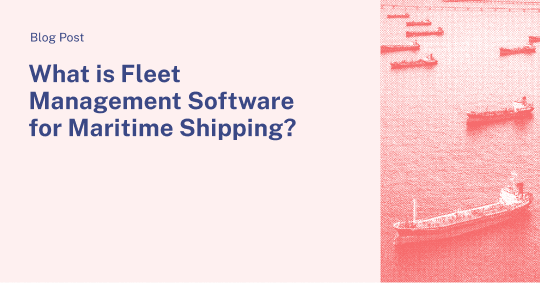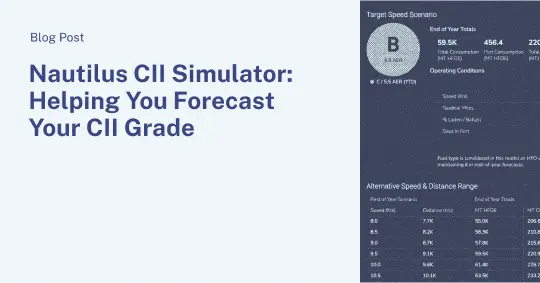Weather can be unpredictable, capricious, and provide critical context required to properly understand vessel performance on a voyage. In June of 2002, while I was sailing as a deck cadet crossing the north Pacific on the SS Prudhoe Bay, the weather was terrible! Even worse, the vessel was very old—built in 1971 as a Crude tanker for the ARCO oil company. By the time I was aboard it was on its penultimate PL-480 food aid shipment from Oregon to Asia, ultimately to be scrapped. Being an old steam vessel, maintenance was a significant problem. On that last leg we lost the turbo-generator, limiting our speed to ~5.5 kts midway through our Pacific voyage. With no hope of fixing it enroute, we found ourselves in a precarious situation—inadvertently snail-pace steaming across the ocean.
Then we hit a rough spot: we began to experience an extreme adverse current of approximately 6.0 kts. Essentially, we were going backwards 12 miles a day. ‘Power is safety’ in the midst of a storm, and since we had none, we changed course to avoid currents and ended up limping home the long way. This brings focus to a point we should never forget: the weather and sea state can even hold a 245 meter long oil tanker at its mercy.
When we think of weather at sea, the imagination runs to situations like the one I’ve just described—the human and age-old adversaries of extreme events, perfect storms, and rogue waves. However, in modern commercial shipping, the weather is mostly okay. We have satellite imagery, radar, weather buoys, ship-borne observers and more feeding data into increasingly complex algorithms to predict weather patterns and provide valuable pre-, mid-, and post-voyage context. Never before has the mariner had so much technical support to help plan for and execute against bad weather. But while we can now reliably say what the weather is like, the true context of weather’s impact on a vessel can only be unlocked with the proper tools and sophisticated analytics.
To avoid or not avoid, that is the question!
If the goal is avoiding bad weather completely, there are options available. The global shipping community relies on weather routing services to dynamically predict and offer advice to navigators. Across the globe, these services are constantly sending updated routing advice to bridge crews and shore-based operations staff. Routing services save time, fuel and vessel wear (and the crew likes nice weather too!).
But how much vessel wear? How much fuel? Sometimes the amount of time saved is in question too. Could the vessel have performed adequately under BF4? BF2? What should routing have taken into consideration for commercial advantage? Counterfactuals are hard to determine without a strong baseline, something the weather doesn’t often allow to be measured—voyages are like snowflakes, no two are ever alike.
The reason routing services have a hard time answering these questions is because it requires the ability to analyze several sets of data in relation to one another. To understand how a vessel should operate over the course of a voyage, you have to know the true performance of that specific vessel, at that exact moment in time, in every weather condition it might encounter. Beyond that, the commercial context also carries weight. The value of a future charter might make it more profitable to speed up and burn additional fuel, or the current costs of bunkers might warrant going a bit slower. Either one of those decisions will impact the weather that it experiences, making the understanding of true performance even more important! Weather routing is great at accounting for the weather, but there are other variables which are important to consider so long as you can also ensure safety.
What are the commercial considerations?
If you are in the market for a time charter, would you like to ensure visibility on performance through the life of that charter? Even in BF4? Recent technological leaps in vessel data and aggregation allow us to know exactly how a vessel performs, even in bad weather.
But why is weather excluded from performance clauses anyway? Traditionally, it seems somewhat bad weather (~BF4) leads to the assumption that nothing else can be measured or guaranteed, and thus all time is excluded. Is that the case today though? With modern technology we can both monitor and model performance in heavy seas. We can now reliably assist the operations team by using high frequency data from a ship to predict how to best engage with a storm. To route around, to push through—both have time and fuel consumption considerations a commercial team needs addressed. The best way to make decisions regarding serious weather is to know:
- How your vessel performs in heavy seas
- Where a commercial advantage lies
Nautilus has built a platform which surfaces this data to your team—directly, continuously and across silos. It is critical that all team members are using the same data for decisions when life and cargo are at stake. As shipping enters the digital age, any service provider needs to make recommendations that will help shippers stay competitive based on reliable, up-to-date data. Our technology is built with the understanding that shipping is dynamic. By being able to account for true vessel performance, weather forecasts, routes and commercial information, our shipping partners can rest assured that our recommendations are accounting for what matters most to their business, even as they continue to change. And that’s how you weather any storm on the path to maximizing profit.


